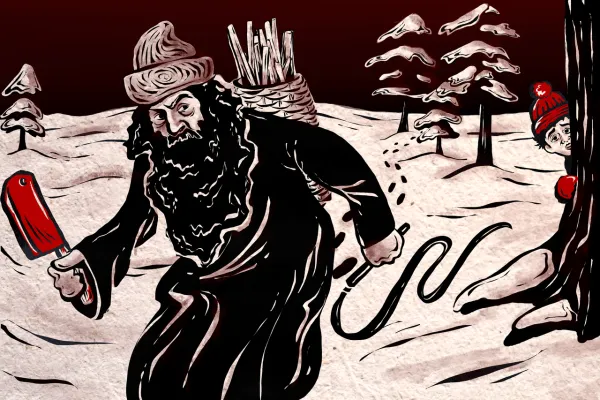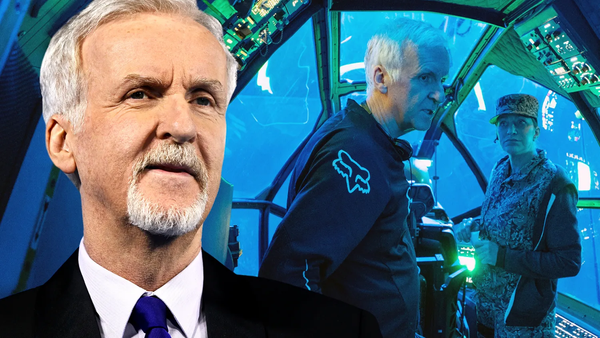Doctors saved her life but she didn't want them to

From the New York Times: "Marie Cooper led her life according to her Christian faith. She baked pies for her neighbors in northern West Virginia, and said grace before even a bite of food. She watched Jimmy Swaggart, a televangelist preacher — a little too loudly, in her daughter Sherry Uphold’s opinion. And she always said that at the end of her life, she did not want to be resuscitated. Last winter, doctors found cancer cells in her stomach. She’d had “do not resuscitate” and “do not intubate” orders on file for decades and had just filled out new copies, instructing medical staff to withhold measures to restart her heart if it stopped, and to never give her a breathing tube. In February, Ms. Cooper walked into the hospital for a routine stomach scope to determine the severity of the cancer. After the procedure, Ms. Uphold visited her mother in the recovery room and saw her in a panic. Doctors restrained her and inserted a breathing tube down her throat, violating the wishes outlined in her medical chart."
Sexually frustrated dolphin blamed for attacks that injured dozens of swimmers in Japan

From The Telegraph: "A lonely dolphin acting out of sexual frustration is believed to be the culprit behind a spate of attacks on swimmers in Japan this summer. Since July this year, 18 people have been hurt in dolphin attacks near the seaside town of Mihama, with some requiring dozens of stitches. Posters warning beachgoers of the menace feature an open-mouthed dolphin baring razor-like teeth. It says that the mammals “are known to be dangerous to humans” and to get out of the water if they are seen nearby. Japan’s problematic mammal is believed to be a solitary male bottlenose dolphin, who may also be responsible for injuring swimmers in 2022 and 2023, and trying to press his genitals against them. Putu Mustika, a lecturer and marine researcher at James Cook University in Australia, told The New York Times that dolphins can inadvertently harm humans by dint of their sheer strength when acting out mating behaviours."
What did wrestler Andre the Giant and Irish playwright Samuel Beckett talk about?

From Open Culture: "Are your idle moments spent inventing imaginary conversations between strange bedfellows? The sort of conversation that might transpire in a truck belonging to Samuel Beckett, say, were the Irish playwright to chauffeur the child André Rene Roussimoff—aka pro wrestler André the Giant—to school? This isn't speculation though, this is something that actually happened: In 1958, when 12-year-old André’s acromegaly — the pituitary disorder that made him grow to seven foot three inches in size by the time he was an adult — prevented him from taking the school bus, the author of Waiting for Godot, whom André knew as his dad’s neighbor in rural Moulien, France, volunteered for transport duty. André recalled that they mostly talked about cricket, but surely they discussed other topics, too, right?"
Bulgarian beach bar sarcophagus turns out to be genuine Roman artefact

From Euronews: "An ancient sarcophagus dating back to the Roman era was discovered on a beach and used as a bar at a Black Sea resort near Varna. Following its discovery, archaeologists from the Regional History Museum in Varna examined the ancient artefact, identifying its rich ornamentation as part of the "garland sarcophagi" from Roman times. The sarcophagus is made from shelly limestone, characteristic of northwestern Bulgaria. It features intricate relief decorations on all four sides, including garlands, animal heads, rosettes, and a labrys. Despite its historical value, photos on social media revealed that the sarcophagus was being used as a bar in a popular beach club for some time, raising concerns about preserving Bulgaria’s cultural heritage. The discovery came to light when a former police officer noticed the sarcophagus on the beach while on holiday in Varna and reported it to the local authorities."
He invented both the Aerobie flying disc and the Aeropress coffee maker

From Ironic Sans: "The Aerobie, if you don’t know, is a ring that’s thrown kind of like a Frisbee, but is aerodynamically designed to fly much further. In fact, the world record for the furthest distance an object has ever been thrown is 406 meters with an Aerobie! The lip of the Aerobie is designed like an airplane’s wing to give it a bit of lift as it travels. And being thin, it doesn’t encounter a lot of resistance like a Frisbee does, so it goes a lot further. He described what motivated him to find a better way of making coffee: "I realized that the coffee makers that we had in our house were not very good for making a single cup. And yet 90% of the time when I wanted to make coffee, that's what I wanted, was one cup. So I experimented with learning the art of what's called the pour-over. But the drip-through time was on the order of about 5 minutes, and I felt that the long wet time was adding to the bitterness of the drink."
Rodafonio, the self-propelled street music machine
Rodafonio, the wheel of live street music
— Science girl (@gunsnrosesgirl3) September 18, 2024
pic.twitter.com/LNDcPktXtT
Acknowledgements: I find a lot of these links myself, but I also get some from other newsletters that I rely on as "serendipity engines," such as The Morning News from Rosecrans Baldwin and Andrew Womack, Jodi Ettenberg's Curious About Everything, Dan Lewis's Now I Know, Robert Cottrell and Caroline Crampton's The Browser, Clive Thompson's Linkfest, Noah Brier and Colin Nagy's Why Is This Interesting, Maria Popova's The Marginalian, Sheehan Quirke AKA The Cultural Tutor, the Smithsonian magazine, and JSTOR Daily. If you come across something interesting that you think should be included here, please feel free to email me at mathew @ mathewingram dot com



